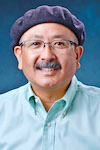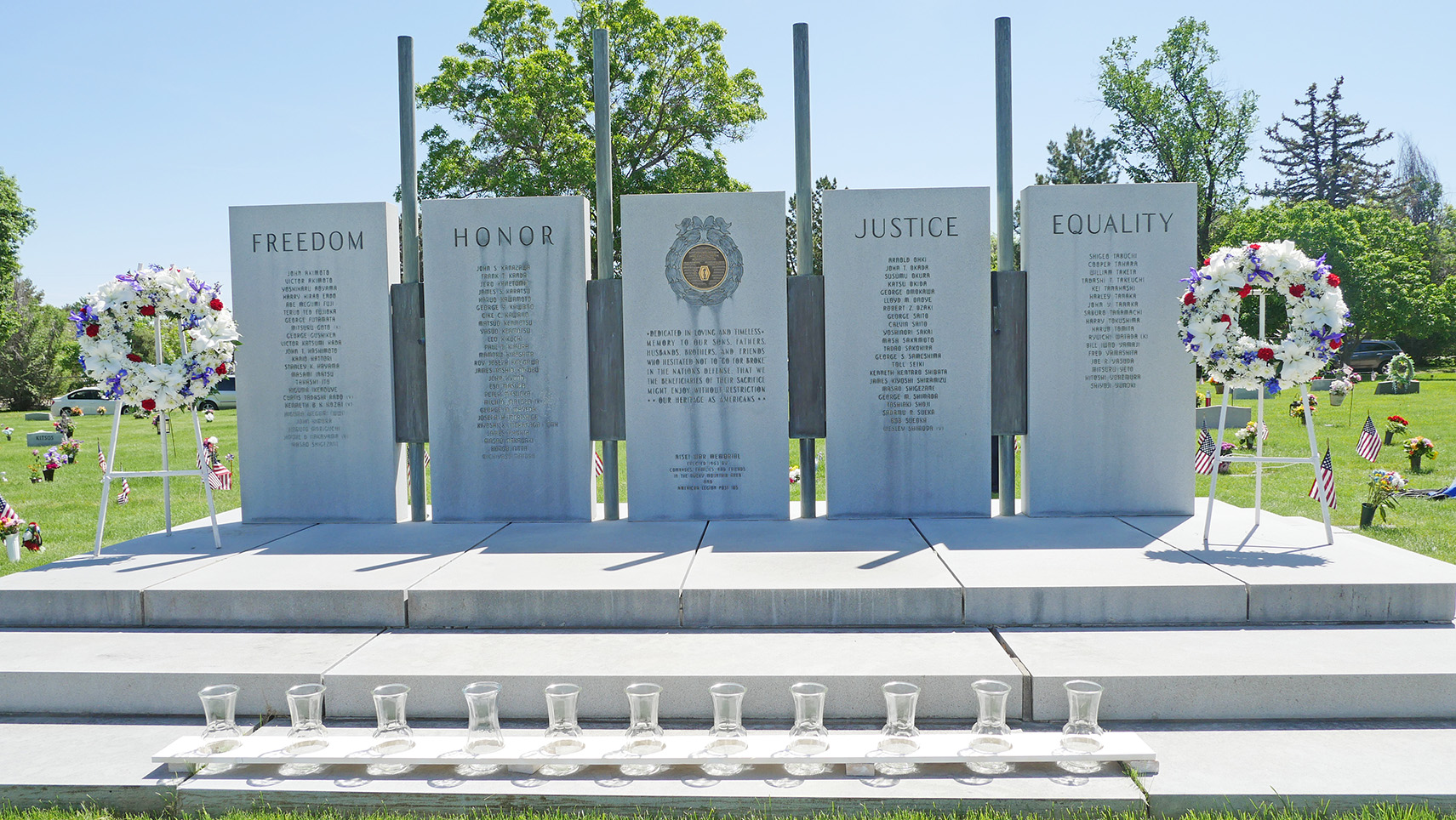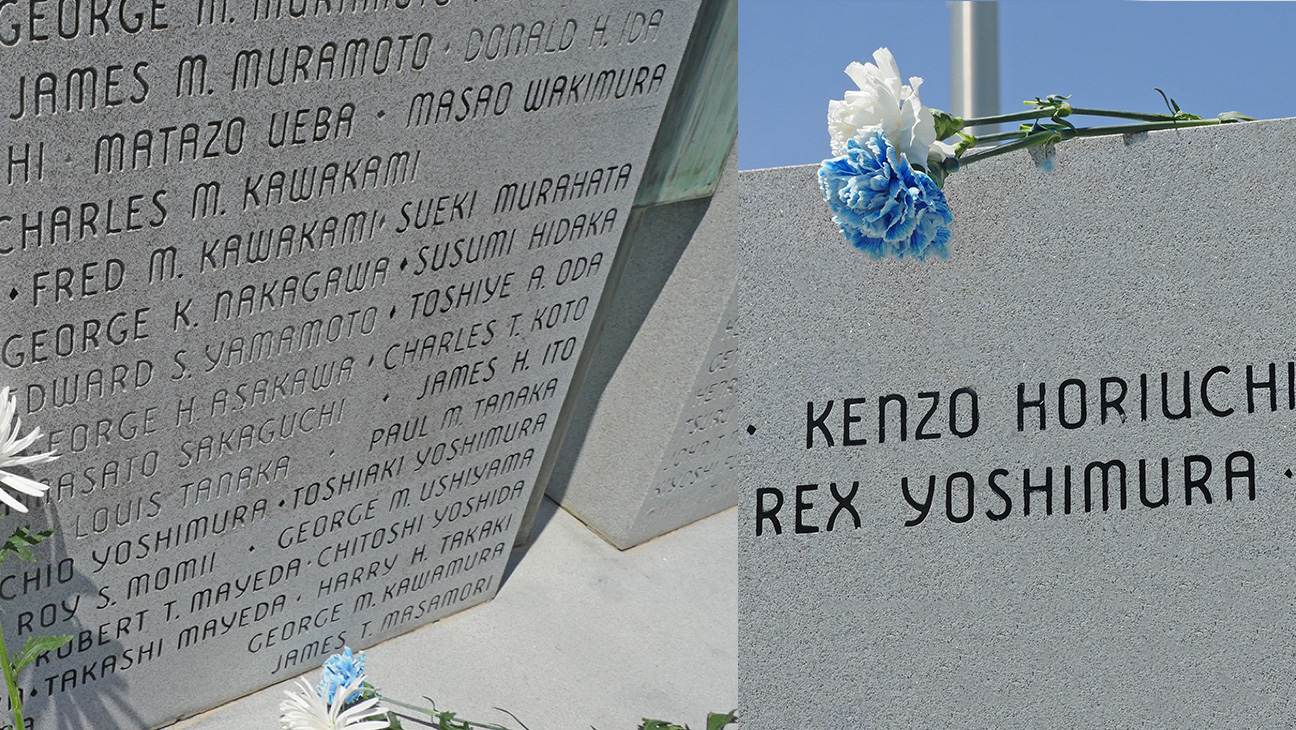
Gil Asakawa
We marked Memorial Day weekend with a tradition that’s held every year on the holiday, at Denver’s Fairmount Cemetery, a huge maze of land crisscrossed by avenues and single-lane roads. The Nisei War Memorial was built in 1963 to honor the second-generation JAs who died during World War II, inscribed with the names of the heroes from Colorado on four large planks with the words “Freedom,” “Honor,” Justice” and “Equality” etched at the top of each.
Over the decades, the memorial has become more of a Japanese American Veterans Memorial, with the names of all JAs with Colorado ties who served in the military etched on the other side of the planks. My father, George H. Asakawa, who died in 1993, is on the first wall. He served during the Korean conflict. My father-in-law, Rex Yoshimura, who served in the Air Force and was stationed in Okinawa before the Vietnam War, is one of the most recent names on the memorial. He died in late 2021.
On the center plank of the memorial, are these words:
“Deeply aware the cloud of suspicion hanging over them in the early days of World War II could be dispersed only by a demonstration of loyalty. Americans of Japanese descent (Nisei) petitioned in 1942 for the right to serve their country. America offered them the opportunity and the Nisei served with distinction and valor in the 442nd Regimental Combat Team in Europe, in military intelligence units in the Pacific and elsewhere. More than 30,000 Nisei bore arms in World War II and Korea, shedding their blood on such far-flung battlefields as the Arno and Bruyeres, Guadalcanal, Myitkyina and Pork Chop Hill. It is to those who made the supreme sacrifice in demonstrating that Americanism is not a matter of race or ancestry that this monument is dedicated.”

Denver’s Nisei War Memorial honors Japanese Americans with Colorado ties who served in the U.S. military. (Photo: Courtesy of Gil Asakawa)
The text was written by longtime Denver Post editor and longtime Pacific Citizen columnist Bill Hosokawa.
The Nisei Veterans Heritage Foundation hosts the annual service. Floral tributes are given at the base of the memorial by representatives of community organizations and also family members of the most recent names to be added. The consul general of Japan at Denver attends the ceremony, and a speaker is featured each year.

Marker’s for Gil Asakawa’s father, George H. Asakawa, and his father-in-law, Rex Yoshimura (Photo: Courtesy of Gil Asakawa)
This year, my wife, Erin Yoshimura, spoke eloquently about how both sides of her family served — past and present — in the military. On her dad’s side, five out of seven brothers served, including in the 442nd Regimental Combat Team and after WWII, even though their family had been incarcerated.
It’s always a powerful and inspiring event and a way to reconnect with friends and family and remember how our community has always been patriotic and willing to fight for the freedoms we enjoy as Americans.
I recently was reminded of this lasting bond within the Japanese American community, and especially the wartime JA experience of incarceration linked to JAs joining the U.S. military, as much to prove their patriotism as to fight the country’s enemies. And, seeing Denver’s Nisei Veterans Memorial again, I was reminded of the power of memorials to the past and monuments to an ideal.
I was honored to be chosen as one of the newest members of the board of directors of the National Japanese American Memorial Foundation, the group that built and oversees the powerful memorial to both the concentration camps and the heroes who made the greatest sacrifice during WWII.
The memorial sits on a triangular plot of land off the National Mall, a couple of blocks from the U.S. Capitol. It’s a peaceful meditative spot amongst D.C.’s buzzing vibes of power and history. It’s nice to see how the history of Japanese Americans fits into the landscape.
The memorial has different parts to it. There’s a raised rock garden and summertime fountain with large stones representing the incarceration camps, as well as a surrounding wall around the memorial that names the camps and has the number of incarcerees etched beneath each name; a section that lists the names of every JA who fought and died during the war; and a large bronze sculpture of two cranes struggling to free themselves of barbed wire. The statue, which sits atop a marble base, is by JA sculptor Nina Akamu, the daughter of a career Air Force serviceman.
It’s a striking, emotionally wrenching piece that captures both the struggle and the victory of the community it represents.
Although I’ve attended many Memorial Day services, this year’s events got me thinking more than before about the holiday and its symbolism for Japanese Americans. That’s why we memorialize our past, current and future heroes.
Gil Asakawa is the author of “Tabemasho! Let’s Eat! The Tasty History of Japanese Food in America.”



